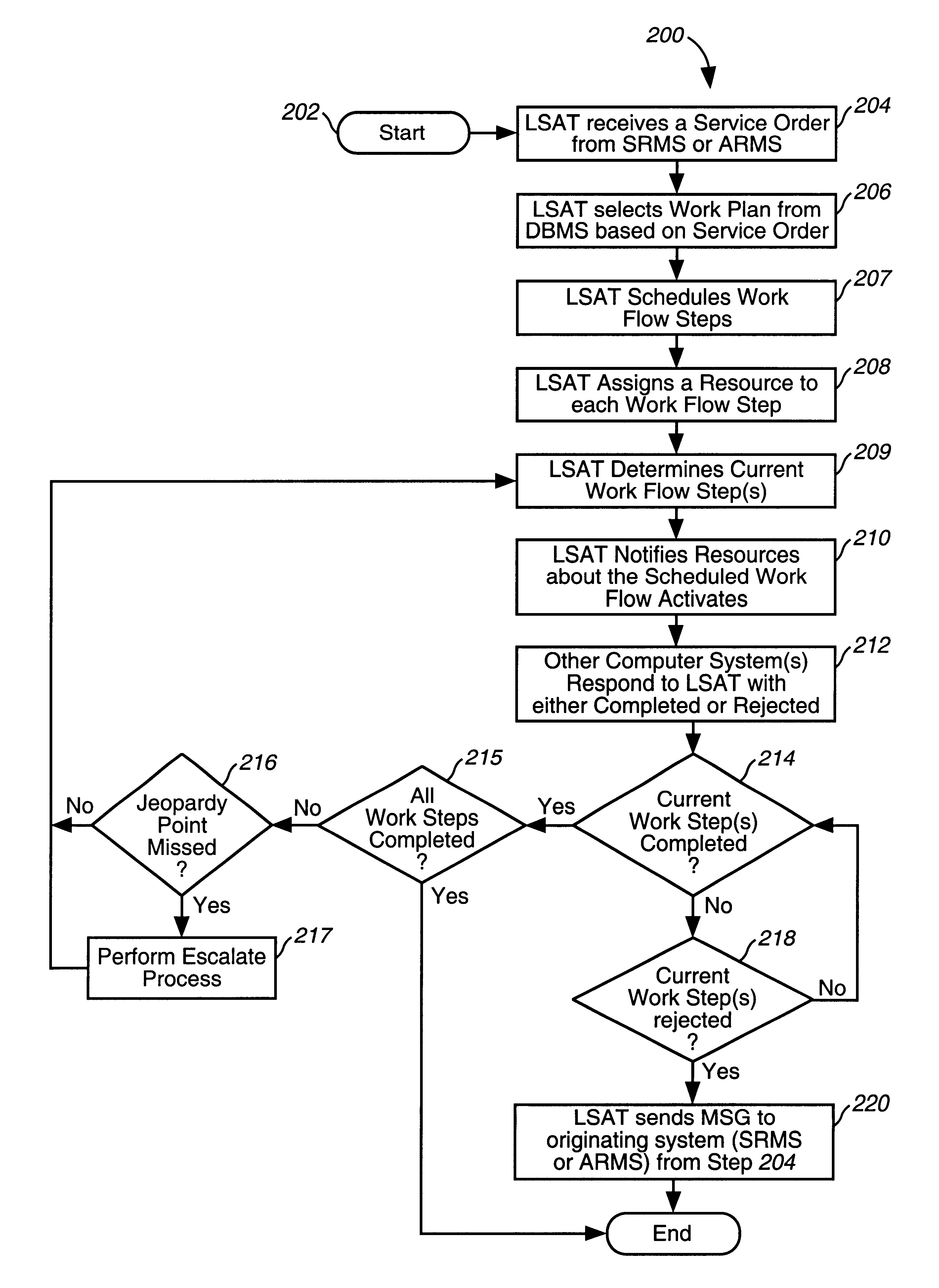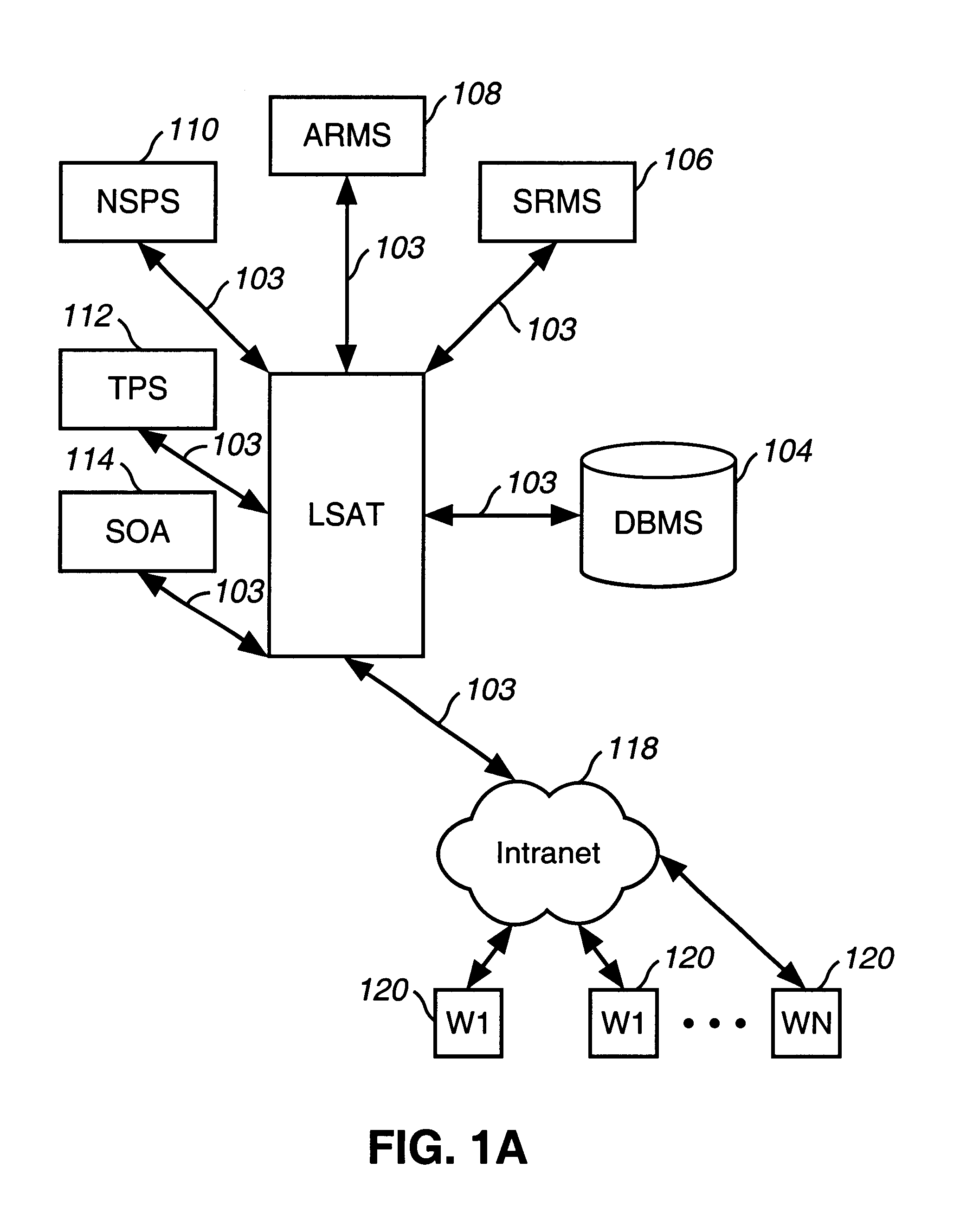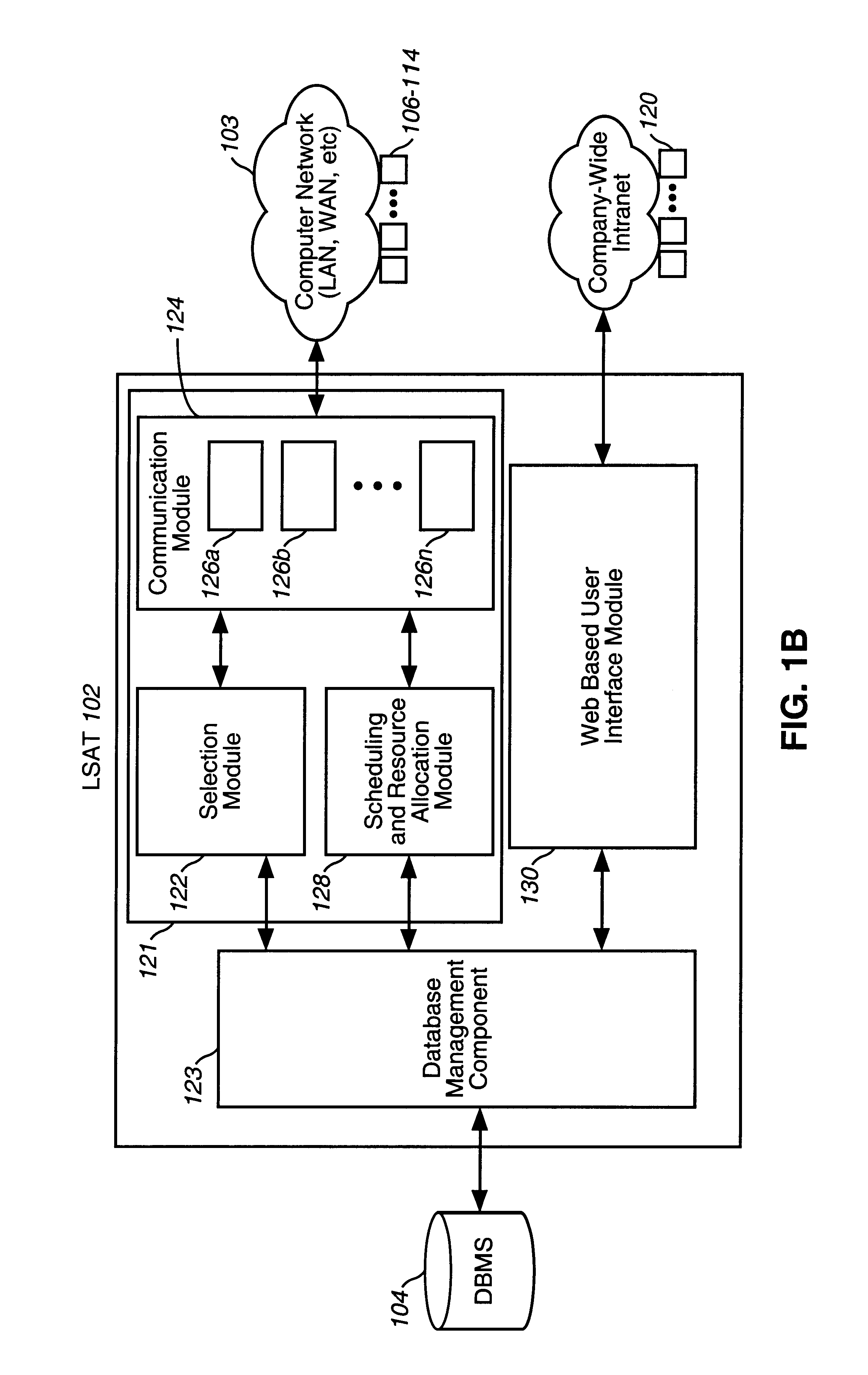System and method for processing and tracking telecommunications service orders
a technology of telecommunication service orders and management systems, applied in the field of workflow management systems of telecommunication corporations, can solve the problems of no advance notice, complicated process, and difficulty in processing telecommunication service orders in an economical and efficient manner
- Summary
- Abstract
- Description
- Claims
- Application Information
AI Technical Summary
Benefits of technology
Problems solved by technology
Method used
Image
Examples
example environment
[0039]FIG. 1A is a block diagram depicting an operational environment according to a preferred embodiment of the present invention. A workflow management server running software to implement a preferred embodiment of the present invention, referred to herein as LSAT, is depicted as block 102. An exemplary computer system that can be used to implement the workflow management server LSAT 102 is subsequently described below with reference to FIG. 6. LSAT 102 is coupled with various computer systems 106-114. These computer systems 106-114 are used to conduct business functions for the telecommunications company. These business functions include Service Order processing and the provisioning of telecommunication services.
[0040]Specifically, the computer systems 106-114 depicted in this example embodiment include the SRMS 106, ARMS 108, NSPS 110, TPS 112 and SOA 114 computer systems. Each of these example computer systems 106-114 are described in the section below entitled “ISD Support Sys...
example business
Area Users
[0057]In the example embodiment of the present invention described herein, it is assumed that the following five primary groups of the Company use a computer system referred to as the “Information Systems Development” (ISD) system. These five groups are as follows:[0058]Order Entry (OE);[0059]Provisioning (LSP);[0060]Translations (LST);[0061]Field Operations (Ops); and[0062]Order Coordination (OC)
[0063]In addition, there are typically users within the Company that participate in the business process using only the LSAT web interface at 120 to view the status of Work Orders. The LSAT web interface is described in detail below. The business users in this example include:[0064]Local Service Consultants (LSC);[0065]Translations (DTE);[0066]Construction (TSI);[0067]Topology; and[0068]Local Exchange Carrier Coordinators (LEC Coord).
ISD Support Systems
[0069]As stated, telecommunication companies typically make use of a variety of computer systems to process orders. Such computer ...
PUM
 Login to View More
Login to View More Abstract
Description
Claims
Application Information
 Login to View More
Login to View More - R&D
- Intellectual Property
- Life Sciences
- Materials
- Tech Scout
- Unparalleled Data Quality
- Higher Quality Content
- 60% Fewer Hallucinations
Browse by: Latest US Patents, China's latest patents, Technical Efficacy Thesaurus, Application Domain, Technology Topic, Popular Technical Reports.
© 2025 PatSnap. All rights reserved.Legal|Privacy policy|Modern Slavery Act Transparency Statement|Sitemap|About US| Contact US: help@patsnap.com



